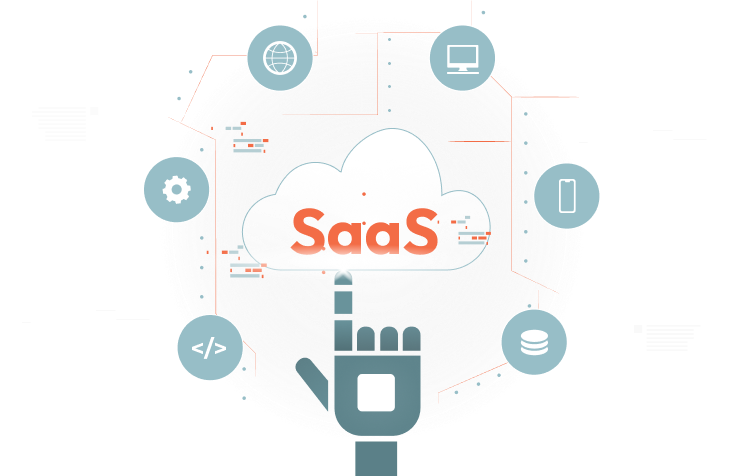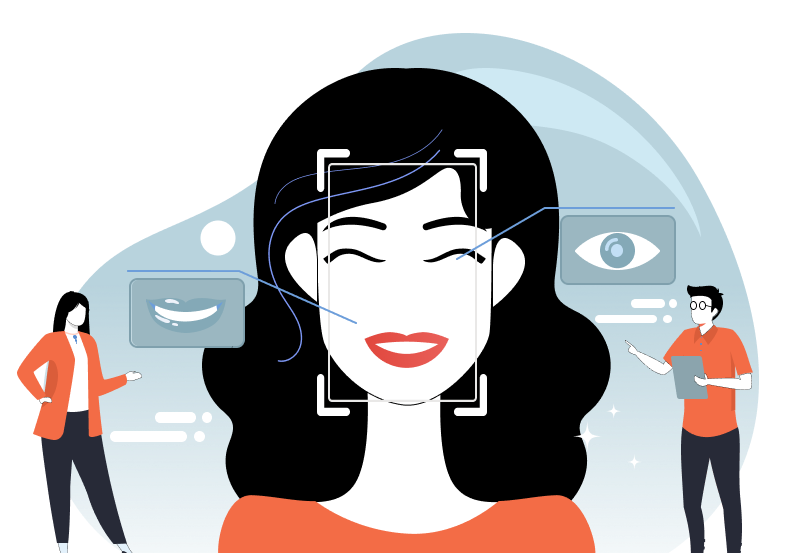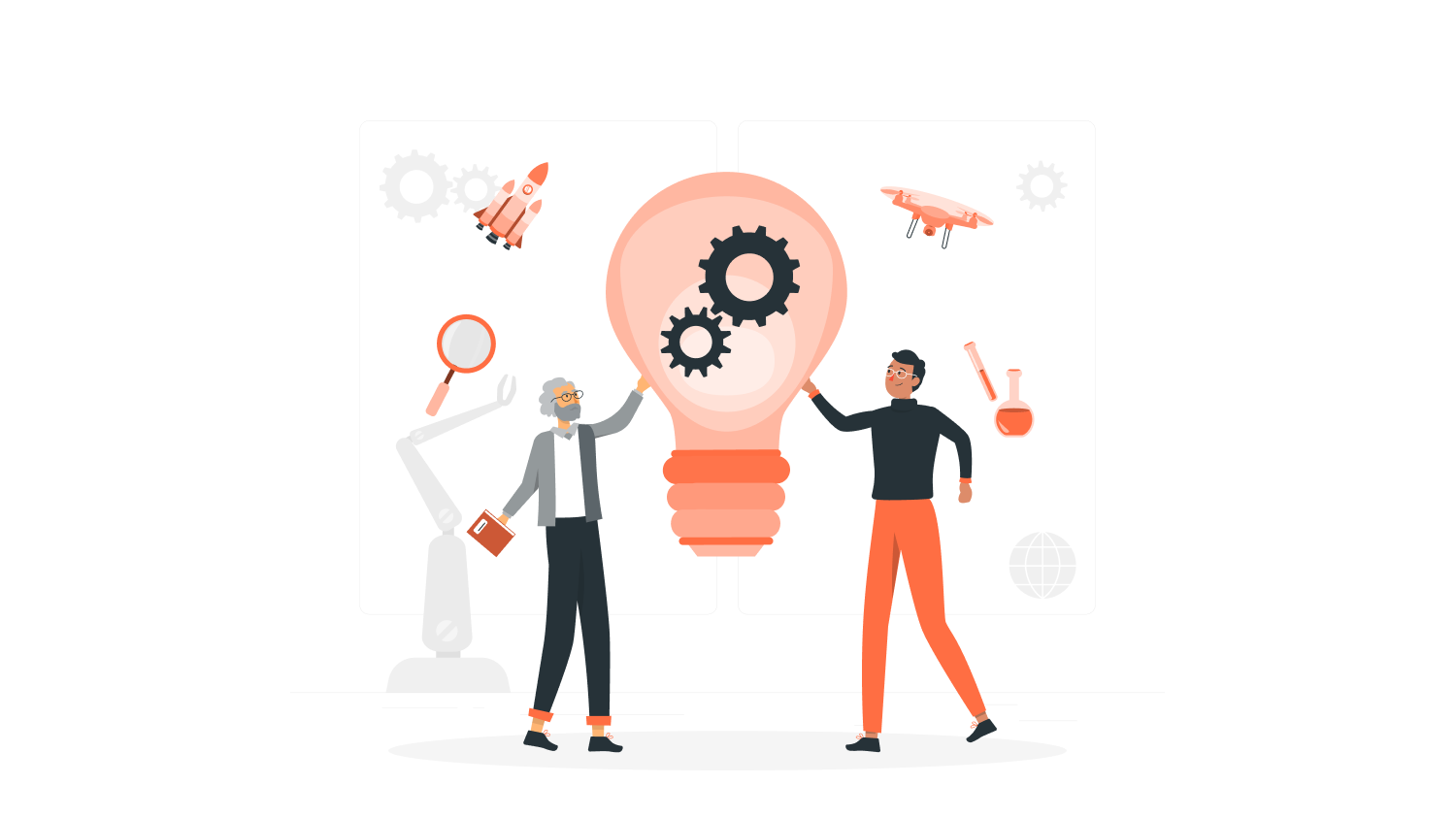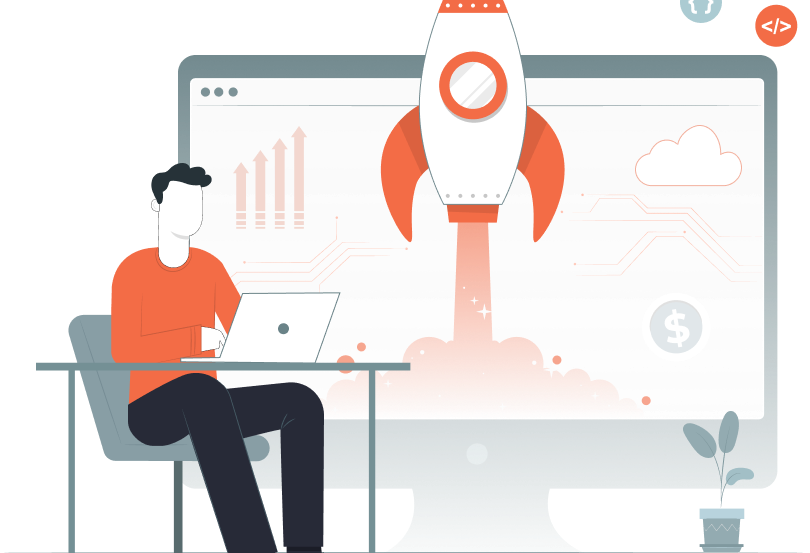A perfect outline of each stage of the creation of a SaaS app would encourage a focus on product development. In-depth research would help you create an excellent product map.
Understanding the ins and outs of the SaaS development process is necessary to make the best decisions regarding hiring a development team, maintaining the financial plan, or marketing the new solution.
Let’s dive right in to know more.
How to Develop a SaaS Application?
Planning
Before entering the development stage of an app, stakeholders can conduct market research, study the potential customers, and define the goal and the main features that users demand.
A clear app idea, a rough draft of its features, tech stack, cost estimate, and development timeframe should all be included in the plan.
Tech stack defines the programming languages that are commonly used and are compatible with the app requirements.
- JavaScript for frontend
Everything that users see on their screens is referred to as the front end. JavaScript, HTML, and CSS work extremely well and are used by teams all over the world in connection with frameworks and libraries.
- GoLang as the main programming language
GoLang is the most popular programming language because its extensive library makes programming easier. Most importantly, it is a safe static information language that keeps the whole structure safe. You can use the GoDoc tool to help you analyze the code required to produce documentation pages.
- MongoDB for database
MongoDB is a widely known cloud-hosted database service known for its flexibility, standardized query interface, and security level it provides.
- Google Cloud or Amazon Web Services for cloud computing
The core component of SaaS products is cloud computing. The choice between the two cloud computing services is determined by your company’s needs, though both platforms offer multiple benefits.
Learn more about Saas tech stack here.
Design and development
The design phase is categorized into three phases:
- Documentation preparation
- Application design
- Architecture development
Documentation preparing phase | 1. The development team and stakeholders organize discussions. 2. Explores project details and technical and legal documents, like software development contracts, a non-disclosure agreement (NDA), software requirements specification SRS), risk assessment plan, and cost estimate. |
Application design | 1. This phase includes creating app mock-ups and choosing the UI/UX design of the requested solution. 2. Plans about user-friendly features and easy access on mobiles and laptops. 3. Users can conveniently access the app from anywhere. |
Architecture development | 1. The purpose is to choose the proper tech stack and the cloud. 2. A tech stack is built based on technical requirements, programming languages, frameworks, and libraries. 3. SaaS owners must consider its flexibility, scalability, security, and pricing while choosing a cloud server to implement the requested solution. |
Also Read: Building Your SaaS Business in 11 Simple Steps [FAQS]
Testing and implementation
Developers frequently use Agile approaches to develop SaaS applications and create complex solutions such as cloud-based software.
This method ensures that the resulting product has no blocking issues and is ready for market launch during the implementation process.
Starting with an MVP is an excellent option because it contains essential features that can meet the basic needs of its users.
MVPs are simple to develop and launch. This software model allows developers to create solutions that closely match end-user and customer business requirements.
Maintenance and improvement
When a SaaS app is released to users, developers pay close attention to its performance and look for ways to improve the requested solution.
They can make necessary tweaks and identify areas that could be improved to make the app run more smoothly and efficiently.
The switch from on-premises to the cloud will be a crucial part of the work when a company with a solution decides to develop and switch to a SaaS model.
It includes defining the migration options, the amount of data to be transferred to the cloud, the server type, downtime issues, and more.
Why are businesses investing in SaaS app development?
Cost management
A small investment can help kickstart a SaaS because the pay-as-you-go model can be started with little capital and then scaled up as your business grows and profits.
SaaS application implementation takes less time and money than traditional on-premise system setup. Most SaaS providers offer application maintenance and support, allowing you to avoid the expense of hiring and training in-house development teams.
Reducing IT dependency
Hardware maintenance, programming errors, service interruptions, software updates, regular maintenance, and backups are handled by SaaS app service providers, allowing you to concentrate on your core business activities.
In response to your business needs and the services you have selected, the SaaS provider will assist you in customizing the application, upgrading the software to the most recent version, and training your employees.
Integrating with other systems
SaaS-based applications can be easily integrated with existing or third-party software.
SaaS providers such as NeoITO will assist you in integrating your CRM with ERP or HRM with payroll software by developing custom APIs and plugins.
Cloud infrastructure and on-demand computing models allow you to scale up to meet rising demand.
Managing risks
Securing the application, operating system, platform, network, and physical infrastructure are all the responsibility of SaaS software providers.
SaaS provider also helps in securing your customer data and user access by utilizing the following:
- Identity and Access Management (IAM)
- Cloud data encryption
- Data Loss Prevention Software (DLP)
- Compliance solutions
- Real-time threat intelligence
- Behavioral analytics
- Cloud Access Security Broker (CASB) solutions
Types of SaaS apps
SaaS applications are divided into two categories:
- B2B (Business to Business)
- B2C (Business to Customer)
Let’s look deeper at the two types and the SaaS apps that can be built for them.
B2B (Business to Business)
Here are some categories of SaaS apps that are built for B2B.
- Enterprise resource planning systems (ERPs)- These involve managing complex processes, including various modules based on a company’s needs. Inventory, supply chain, accounting management, CRM, and HRM systems are just a few examples.
- Customer relationship management software (CRM) – Many businesses use CRM to keep in touch with their customers. Such software assists businesses in monitoring marketing campaigns, tracking product delivery, and resolving customer issues.
- Human resources management software (HRM) – This SaaS helps staff management, gathering data about current and potential employees to benefit administration, estimating employee performance, activities, assigned roles, and more.
- eCommerce apps – This enables online e-commerce businesses to manage their services and process flows, such as supply chain management, inventory control, cash management, and automated invoicing.
- Project management tools – This SaaS product aids in project estimation and management. These tools enable teams to stay updated on current project updates while staying within the project’s time frame and budget.
Read More : Top 10 Reasons App Developers Need A Project Management Tool
- Collaboration tools – This tool facilitates remote working, monitoring, and management by utilizing conferencing platforms and collaborative software such as Google Sheets, Google Meet, and more.
- Marketing software – It enables businesses to track their performance and adjust their packages to meet customer demands, as well as create, launch, and track marketing campaigns on various online platforms.
B2C (Business to Customer)
These are the categories of SaaS apps used for B2C.
- Streaming platforms – People from all over the world can watch videos and listen to music from virtually anywhere. Netflix and Spotify are two of the most well-known and widely used streaming services.
- Graphics, video/audio, and text editors – These SaaS apps are popular for online translation, image and video editing, and other activities linked to blogging, work, and personal needs.
- E-learning apps – Much of the audience uses online mediums to learn and master skills. E-learning makes lessons available from anywhere in the world, and many startups believe it to be a good idea because it generates a significant amount of revenue.
| SaaS apps from a user perspective | SaaS apps from a business perspective |
With a stable internet connection, cloud-based applications can be accessed from anywhere, at any time, and from any device. Users will not experience any application downtime as application providers run automatic software updates in the cloud. They can adapt the used software to their current needs and reduce costs by not paying for features they don’t use. Users can quickly scale up and down their SaaS solutions based on their subscriptions. As SaaS applications are stored in clouds with strict regulatory compliance requirements, they are typically well-protected from cybercrime. Even if any of the cloud servers fails, SaaS solutions remain operational. | Any type of business or user can access SaaS applications from anywhere in the world. These apps enable you to enter a larger market. SaaS solutions do not restrict themselves to a single location or language; they effectively reach a large number of people. As subscription plans require a minimum, even complex and feature-rich SaaS solutions are now accessible to businesses with limited budgets. Consistent revenue is sourced through subscriptions. It allows businesses and individual users to pay a small amount each month rather than purchasing a full-licensed version for a significant sum. |
How can NeoITO help you build a SaaS app?
NeoITO is a successful growing outsourcing company with experts in AI and ML and developers proficient in frameworks such as Angular, React, Vue, Node.js, Golang, Python, Flutter, Ionic, and others.
Waitwhile is one of NeoITO’s success stories. It has ended your long wait, and our project is generating substantial revenue.
Here, read the case study to see how we helped them become the number 1 in the US market
Call our experts to turn your idea into a successful and extensively scaling-up app.
FAQs
What is a B2B SaaS business model?
Business to Business Software as a Service is a business approach that provides a web interface with specific solutions from one company to another, enabling high accessibility, scalability, and reliability in all information and activities performed within the solution.
What is SaaS application management?
SaaS management is the practice of monitoring license usage and spending, managing renewals constructively, and tracking compliance of SaaS apps within an organization’s technology portfolio in an automated and scalable manner.
What programming language is used for SaaS?
Frontend apps should be built with JavaScript, HTML and CSS.
Backend -JavaScript, Python, Ruby, Golang, C# and Java
Database– PostgreSQL, MongoDB, MySQL, and ORACLE
Computing– Google Cloud, Amazon Web Services and Azure




